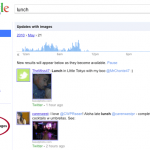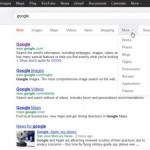When Google finds a new website, they evaluate it to see whether the site is a real or Spam. Most of the Webmasters / Site Owners call this as “The Sandbox” but it is actually the Spam-review process at Google, which uses both automated filters and human review.
The Sandboxing or the sandbox effect is a phenomenon that people have claimed to observe in the ranking of web pages that is performed by Google. It is the subject of much debate. Its existence has not been confirmed, and several observers state that they have observed the contrary to what is claimed for this perceived phenomenon.

Google temporarily reduces the page rank of new domains, placing them into Sandbox, in an effort to counter the ways that search engine optimizers attempt to manipulate Google’s page ranking to bring sites to the top, by involving themselves in black-hat techniques like creating lots of inbound links to a new web site from other web sites that they own before creating that web site. A reverse sandbox effect is also claimed to exist, whereby new pages with good content but without inbound links are temporarily increased in rank, much like the “New Releases” in a book store are displayed more prominently, to encourage organic building of the World Wide Web.
Due to the sandbox effect, it is pretty hard for the newcomers to enter inside the market. Their website resides inside the sandbox until it gets mature enough to be allowed to the search results. The concept of Sandbox and its effect is till now a mystery for the Webmasters / Site Owners. Although there is no direct confirmation of the existence of a sandbox, Google employees have implied it and SEO experts have seen in practice that new sites, no matter how well optimized, don’t rank high on Google, while on Yahoo and Live they get cached quickly. For Google, the jailing period in the sandbox for new sites with new domains is on average of 6 months, although it may vary from less than a month to over 8 months.
With reference to the Wikipedia article entitled Sanbox Effect – David George disputes the claim, made by some, that Google applies sandboxing to all new web sites, saying that the claim “doesn’t seem to be born out by experience”. He states that he created a new web site in October 2004 and had it ranked in the top 20 Google results for a target keyword within one month. He avers that “No one knows for sure if the Google sandbox exists”, and comments that it “seems to fit the observations and experiments of many search engine optimizers”. He theorizes that the sandbox “has introduced some hysteresis into the system in order to restore a bit of sanity to Google’s results”.
Matt Cutts has stated in an interview that “there are some things in the algorithm that may be perceived as a sandbox that doesn’t apply to all industries“.
Sandbox and Aging Delay:
Sandbox and aging delay are similar in meaning and many SEO experts use them interchangeably. Aging delay is more self-explanatory. Sites are being delayed till they come of age. Well, unlike in legislation, with search engines this age is not defined and it differs. There are cases when several sites were launched in the same day, were indexed within a week from each other but the aging delay for each of them expired in different months. As you see, the sandbox is something beyond your control and you cannot avoid it but still there are steps you can undertake to minimize the damage for new sites with new domains.

Minimizing Sandbox Damages:
While Google sandbox is not something you can control, there are certain steps you can take in order to make the sandbox effect less destructive for your new site. As with many aspects of SEO, there are ethical and unethical tips and tricks and unethical tricks can get you additional penalties or a complete ban from Google, so think twice before resorting to them. Below are some ethical steps to be followed to minimize the sandboxing effect and to jump out of it.
-
Actively gather content and good links
-
Plan ahead
-
Buy old or expired domains
-
Host on a well- established host
-
Concentrate on less popular keywords
-
Rely more on non-Google ways to increase traffic
In 2006, it could take three to six months for a new site to appear in the results. Google improved the process with better filters and more reviewers. It now takes only four to six weeks. This means if you launch your site on the first of September, your customers may not be able to find your site in Google until mid-October. To get around this, you can start a PPC campaign on September 1st so ads for your site appear in the search engines. You can also do a silent launch in early June and make sure the search engines start indexing the site. Don’t worry about the sandbox. Build your website, add your XML file, and your site will be added to the search engines.
Disclaimer: The post is completely based on individual thoughts and SEO Services Group bears no responsibilities for the thoughts reflected in the post.












The google sandbox is a monster. My site was well optimized with over 40,000 backlinks, my number one competitor only having 5,000. I spent 13 months in, but thank God they finally started treating me as a grown up who don’t want to always play in the sand. I now rank for my main keywords thank God. I hated it while I was in, but not so bad now. Just one day, they finally let me out.